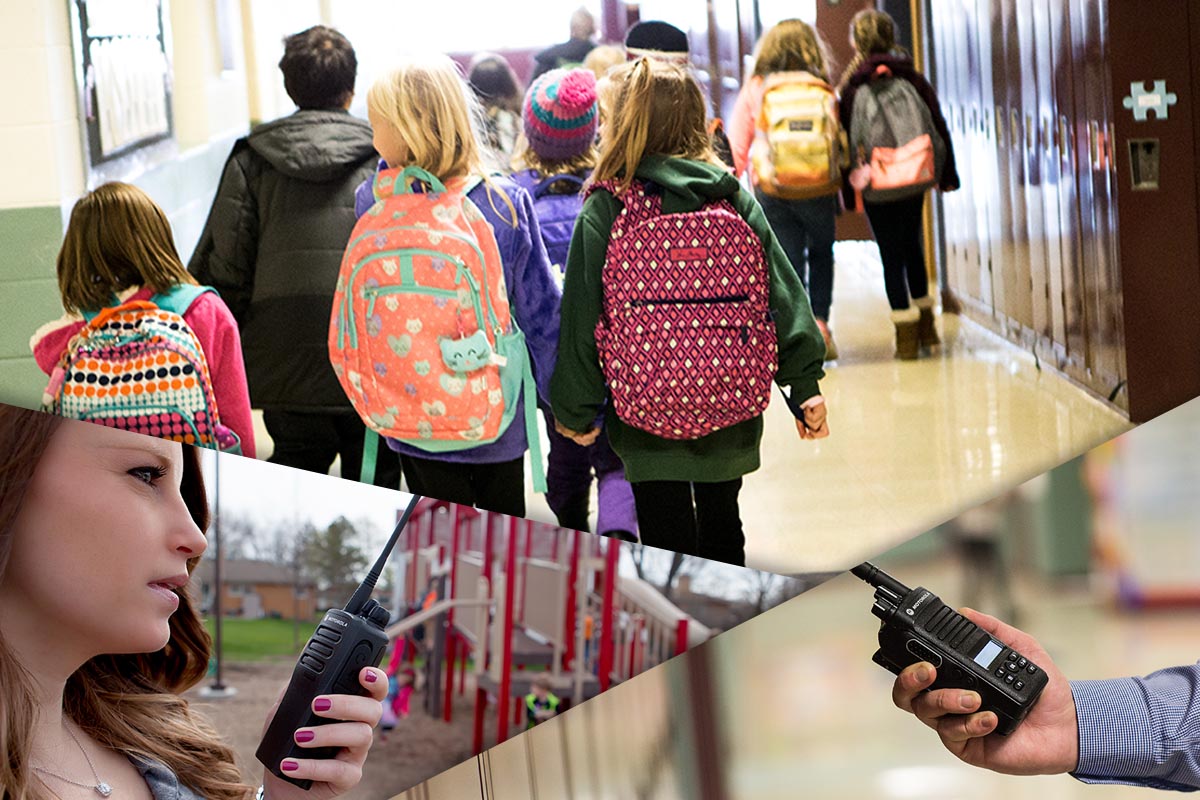
Right now, in school districts across the country, administrators are finalizing their plans for a re-imagined 2020-2021 school year. Will there be in-person learning? Modified schedules? Socially-distant classroom configurations? Each district is forging its own path to a new normal in the wake of COVID-19, and while the strategies may vary from one district or community to the next, educators everywhere acknowledge that campus life may never be the same.
To safely accommodate the inevitable changes that will take place within buildings and across districts, security systems and protocols may need to be re-evaluated, according to BAYCOM Communications and Technology Consultant Eric Schroeder. He says Motorola Solutions’ Safe Schools platform can help to address some of the new realities and increased expectations for the role of security.
“Safe Schools is a platform that leverages multiple technologies—voice, data, analytics and video—into an integrated solution that allows educators to monitor areas of the campus in real time, quickly assess situations and resolve issues before they become problems,” said Schroeder, who is also a member of Wisconsin’s Muskego-Norway School District board. “And it’s going to be needed now, in the wake of COVID-19, more than ever.”
The Safe Schools platform, and its integrated technologies, is designed to help districts:
- Detect: By using video security and analytics, license plate recognition, anonymous tip submission and access control, schools can better protect their perimeter and automate building access or lockdowns.”
“This year, for example, we may end up seeing staggered start times, with kids coming in at 7:10 a.m., 9:30 a.m., and 11:45 a.m., for example, and leaving at 1:15 p.m., 2:30 p.m. and 3:30 p.m.,” said Schroeder. “Plus, I suspect more parents will want to be on campus to see for themselves the safety protocols that have been put in place. With all that movement, there’s a greater risk that access to buildings will be compromised. Safe Schools can help minimize that risk.”
- Analyze: By leveraging AI-powered video analytics, schools can quickly identify suspicious activities and easily search video footage to locate individuals based on physical descriptions.
“This technology can also help districts monitor compliance with social-distancing and face mask policies that may be implemented,” added Schroeder. “For example, if a policy states that no more than four students may occupy each cafeteria table, the system’s cameras can track the number of persons sitting together and send an alert if the count is exceeded. Or, if there’s a face mask requirement, the video can scan for compliance and send an alert when a non-masked person is within view of the system’s cameras.”
- Communicate: By integrating two-way radios, broadband devices and video security, school employees are instantly notified of any security breach by a text-to-voice alert and text message on their radio, providing proactive notifications for both every day and critical events.
- Respond: By sharing real-time alerts and live video feeds, school officials and public safety agencies can coordinate an incident response and provide instant “eyes on the scene.”
Not only can Safe Schools help educators address security concerns as schools reopen for the 2020-2021 school year, Schroeder says the platform will continue to deliver long-term operational benefits.
“You can implement different modules at different points in time, starting with the parts of the platform that are most important and then adding others over time to further enhance safety as funding becomes available or as needs change,” he said. “Plus, when all of the security technologies are integrated into the same system, they become much more efficient to maintain—by the school or by a single vendor.”
Learn more about the Safe Schools platform on our website or call us at 800-726-5426.
